



February 15, 2019
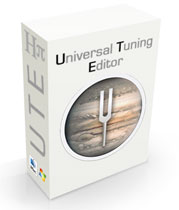
This new update of Universal Tuning Editor introduces MIDI instrument playback and animation, basic tuning editing features, several new tuning file export formats, and fixes all reported bugs.
Since the main purpose of UTE is to define tunings for microtonal MIDI controllers, it makes sense that you should be able to play back the pitches you've assigned to the keys of the instrument when you connect your microtonal controller to UTE as the MIDI Input Source. This has of course been the plan for UTE from the start, and this release is the first to implement this feature. So for example if you own an Axis128, when you open that instrument in UTE and connect your Axis keyboard via MIDI, when you play keys on the Axis, the keys of the keyboard in UTE light up, the rows belonging to those keys in the Tuning List are selected, and the tones you have assigned to those keys sound as you play. The playback uses the internal MIDI synthesizer by default, and you can select the playback patch using the Synthesizer window.
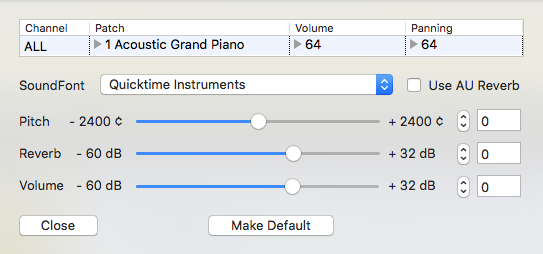
You can also route the MIDI output to an external synthesizer, though not every destination will be compatible (for details explaining why this is, see the FAQ). Unlike older H-Pi apps such as CSE and TPXE, you do not have to open a special window to enable the "Live MIDI" playback feature. When you select your keyboard (or the MIDI interface connected to your keyboard) as the MIDI Input in UTE, playback of your tunings as you play the keyboard is automatic. The keyboard animation and Tuning List selection is however optional, and is controlled in the Display window. The setting for this option which you prefer for new documents is selected in the Preferences window.

The word Editor is part of the software's name, so one would assume that editing features should be available. Before this release, UTE has been admittedly a bit lacking in this area, since after mapping an imported scale, all editing had to be done simply by hand in the Tuning List, one entry at a time. This release introduces the following basic editing functions under a new Selection menu:
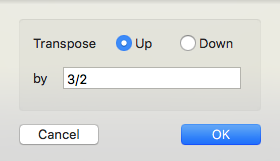
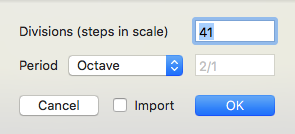
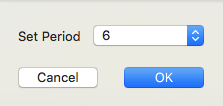
So now a range of keys can be selected and transposed up or down by some interval, or the period can be set or moved up or down (via simple keyboard shortcuts using arrow keys) for a selected key or range of keys. Any equal division (both octave-based and non-octave) can also now be easily created and mapped either to selected keys or to the whole instrument. One item in the list, Reverse Order, is a user-requested feature which simply reverses the order or tuning entries assigned to the keys of a selection, to quickly produce a "left-handed" backwards-mapped version of any tuning.
When you import a Scale into UTE, you choose a key of the instrument on which to assign a Tonic pitch. In previous versions of the software, this was always done by selecting an Instrument Period number and then selecting an instrument Key number within that Period. That method is fine for people who like to think in terms of the way an instrument is structured, but not everyone likes to think that way. For many people, it is easier to simply choose a key number from the total number of available keys. Or (perhaps even easier) someone may prefer to select a key from a list of only those keys which are currently selected in the Tuning List. Scale Mapping has been updated with these different ways people prefer to work. The frequency assigned to the Tonic is also now shown in the window to make it more clear exactly what pitch is being assigned when Scale Mapping is taking place.
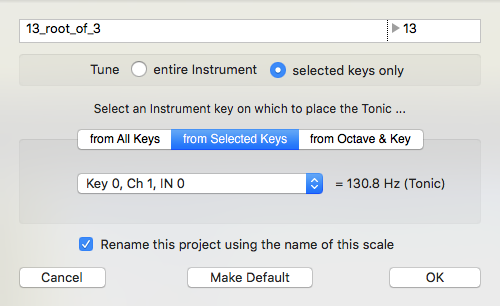
The ability to export tunings in various formats is useful for working with other software, and until now UTE has provided only exporting .csv files, which is a format supported by all H-Pi Instruments tuning software. Software from other vendors typically use .scl or .tun, and sometimes .syx can also be useful, so these export formats have been added to UTE. The .hz format, also used by H-Pi apps, has also been added.

So with this release, UTE is starting to become the app it is intended to be. Rest assured that more editing features, more MIDI output options, and more tuning file export formats will be added in future releases of the software.
To download the update, please go to the UTE software page.
Best Regards,
Aaron
[ Showing 1 entry | Previous entry | Next entry | Show all entries ]